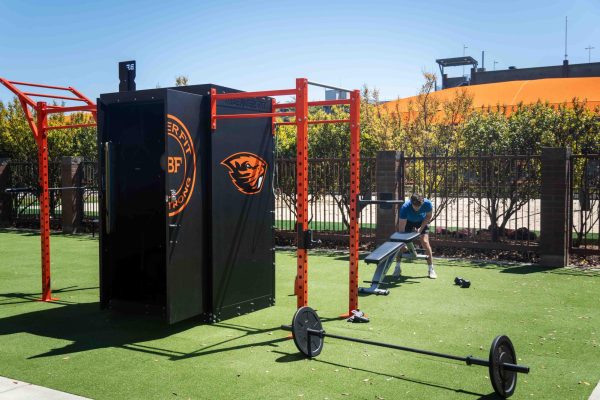How to take care of a plant
OSU Horticulture Club offers beginners advice on how to raise plants
April 25, 2023
Faith Young, an officer from Oregon State University’s horticulture club details everything aspiring plant parents need to know to take care of their plants.
Young is one of three officers with the horticulture club here on campus. According to her, the first thing you need to do when trying to raise a plant is to find out their basic needs — you need to do research into the type of plant you want.
“Know your plant like you’d want to get to know a person.” Young said. “What does it need to really thrive? Instead of, ‘Oh, this looks pretty, I want this in my house.’ Making sure that you have all those amendments, that you’re feeding it and that you have time, at least a weekly schedule, to be able to really focus on all the plants that you have.”
All plants need two things: light and water. Finding out how much each plant needs is critical to being able to care for it.
“If you don’t have what it needs, it’s just gonna die, and that’s a lot of money and time down the drain,” Young said.
Young also said that if you don’t have enough natural light in your home, LED lights are a really good way to produce a lot of artificial light without using a ton of energy.
Another very important thing to be aware of is how much humidity your plants need, she added. Certain plants will need a lot of moisture, and that is not something you can provide by just watering it. Young said plants like ferns that need a lot of moisture will thrive in places like bathrooms, but if you can’t, then you need to have an artificial humidity source.
“You need to be running a humidifier at least two to three times a week and a lot of those plants just need to be soaked,” Young said. “Like instead of watering it heavily because you think it needs more moisture, that’s not really great for it. Letting it dry out completely but then soaking it in a tub, letting it really absorb all that water will help, because the water goes to the smaller roots and feeds it. That’ll hold it off for a good amount of time.”
You can place your plants in a bathtub, a sink or even just a tray. You just need to place your plants and their pots in a few centimeters of water for a few hours. Be careful not to overwater your plants, however. This can lead to many different problems including things like gnats, or rot. If your plants do get sick it’s a good idea to separate them from your other plants to make sure nothing spreads.
“Oh, and when you get a plant, it’s nice to quarantine it away from the other plants just in case,” Young said. “Sometimes they have mites, or something else going on and you don’t want that to spread to all the other plants. So it’s nice to quarantine it and give it its own space so it has time to acclimate. It’s not gonna look like it’s thriving because it’s adjusting, but just give it time, like three to six months. It might just need to be like, ‘So this is how much light I get, the amount of humidity I get,’ and it’ll adjust to that. If they don’t look super happy, just give it time and know that it might come around again or maybe it won’t.”
If you’re interested in learning more about plants and how to take care of them, visit the Oak Creek Center for Urban Horticulture at 844 SW 35th St. here in Corvallis. The horticulture club is also always looking for members — meeting information is posted on the bulletin board in the Agricultural and Life Sciences Building, on the fourth floor near Room 4159.



















